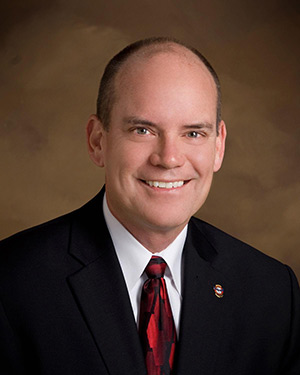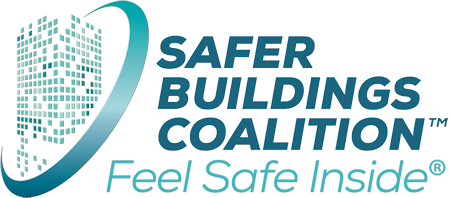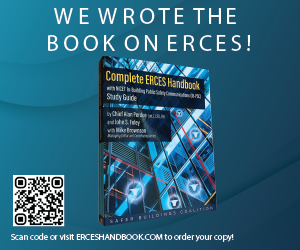From the Chief’s Corner: The Temptation of Low-Hanging Fruit

Posted on January 27, 2021
For years, I’ve sought to approach things based on Habit #2 from Stephen Covey’s book titled The 7 Habits of Highly Effective People: “Begin With the End in Mind.” This is about having a clear vision about the purpose of a particular task. In other words: What exactly are you looking for? What are you trying to accomplish? Another important life principle I always tried to practice and reinforce when making decisions during my career in emergency service is “What’s best for those we are here to serve?”
In the case of helping building owners in the selection of the best solution for correcting inadequate in-building radio coverage, those of us in the role of advising them have a duty to place the heaviest emphasis on recommending the best solution that considers many factors – not the least of which is the reliable protection of life in both the subject building and in the surrounding community.
We have many labels for the person in such a position: Solutions Architect, Account Executive, Business Developer, Design Engineer, Sales Engineer, Sales Executive, Technology Consultant, or simply: Consultant.
For the purposes of this article, let’s agree that we should be focused on helping the customer select the optimal solution. This places us in the role of Solution Advisor.
Faced with a customer who is not sure about the outcome they are trying to achieve, who is searching for a solution to a problem that they may not even understand, the Solution Advisor has a unique opportunity to address that customer’s needs AND pursue their business objectives. In a situation like this, the Solution Advisor has a significant ability to listen to the customer and understand their objectives and, based on that, influence the customer’s decisions, and guide them toward the right products or services.
The Temptation of Low-Hanging Fruit
The Solution Advisor/customer relationship calls to mind the term “low-hanging fruit,” which has been a part of the English language since the 17th century. Research shows that the exact phrase first appeared in print in a 1968 article in Britain’s Guardian newspaper, referencing something that is easily attainable. Over the years, the phrase often has been used to describe corporate gains that can be attained with the least effort.
For a Solution Advisor, low-hanging fruit may mean many things, such as a customer with a tight deadline, a large project with multiple buildings and a pre-approved budget, an RFP that places limits on competition. Circumstances that offer a real business advantage which may help them meet their quotas and/or close sales faster. But if Solution Advisors approach their challenges with the concept of “beginning with the end in mind,” they must understand that in most cases, there is only so much low-hanging fruit. And then what? At some point, the Solution Advisor must be able to address the rest of the market, and in order to do so must fully understand all the solutions that may be available to the customer.
Whether you are picking low-hanging fruit or reaching for something higher up the tree you have to consider an important question: If this decision goes wrong, who or what will be impacted, and what are we risking by making this critical decision?
And this, my friends, is where the discussion about an Emergency Responder Communications Enhancement System (ERCES) comes in. In our industry, the first individual a building owner (or his/her representatives) encounters when trying to solve their in-building communications problem is often the Solution Advisor. The customer (i.e., the building owner) and the people the solution will serve (i.e., emergency responders) may not know exactly what they need. Consequently, they’ll be leaning on the Solution Advisor to recommend the optimal solution.
I use the phrase “optimal solution” here because there are multiple potential solutions for solving the in-building communications problem. Contrary to popular belief, the codes and standards do not require a Bi-Directional Amplifier (BDA); they require a solution that solves for a lack of coverage. Many codes and standards are performance-based, rather than prescriptive. They specify the quality and specific coverage areas where radio communications must perform acceptably, not how to achieve that coverage.
If it turns out that an ERCES is the best solution, then the codes go on to detail certain requirements that ensure system reliability and resilience, such as pathway survivability, testing methods, power backup, and more. The solution can take several forms and must be one that is best for the entire public safety communications system you are trying to enhance. For a Solution Advisor, the low-hanging fruit may be to simply put a BDA into the building without considering better options. It’s viewed by some as a simple solution, and it may generate quick revenues. However, when looking at the solution that is truly needed, this may actually be the worst possible choice. When it comes to an ERCES, it's critical to understand that one size does not necessarily fit all – A good Solution Advisor will work with the customer, the Frequency License Holder, and the AHJ to assess the actual needs before recommending a solution. A truly professional Solution Advisor understands and appreciates that it’s important to begin with the end in mind, and not the quick win.
Radio System Administrators (Frequency License Holders) Can Help You See the Big PictureI have written a lot lately about the Frequency License Holder’s involvement in the ERCES process. The Frequency License Holder working with the Authority Having Jurisdiction (AHJ) is best suited to help the building owner achieve compliance with the codes so that a certificate of occupancy can be obtained. Remember, at the end of the day, it is about achieving the ability for emergency responders to communicate effectively within the building – whether by using a Signal Booster or some alternative solution that complies with the rules of the Federal Communications Commission (FCC) and the applicable codes and standards.
For example, the Solution Advisor may understand that a particular building has inadequate radio coverage, but may not be aware that three of the four buildings on the same block already have ERCES deployed, each with their own rooftop donor antenna and amplification system. As more and more buildings in a given geography deploy these systems, the potential for them to interact with each other in a negative or harmful way increases exponentially.
In a jurisdiction where the Frequency License Holder is well-integrated into the process, they are aware of the “macro” context – and can provide critical information that must be considered when determining the optimal solution. For more on this, please see my September From the Chief's Corner column: First, Do No Harm.
A key characteristic of the best Solution Consultants is to “stay curious.” To always be learning. What might have been obvious and agreed-upon yesterday — the “low-hanging fruit" — may no longer be the case. New products, methods, best practices, and new understandings are a constant in the field of ERCES. With so much on the line, we must demand nothing less of our industry, our organizations, and ourselves.
It is imperative that each Solution Advisor, and every other person in our industry who is a part of the process of recommending, designing, deploying, or maintaining an enhancement solution, has thorough knowledge and understanding of the following:
I truly appreciate each and every person who works to make our buildings safer for our emergency responders and understands the importance of working with the frequency license holders to deploy the right solution for the right location.
Winston Churchill said: “The price of greatness is responsibility.” That concept applies to each of us in the choices we make in both our personal and professional lives. It demands that we educate ourselves within our profession and truly understand what can and will result from our choices. You see, when we make a choice, we must also understand we created a consequence. In other words: Make sure your choices – and their consequences regarding the ERCES – begin with the end in mind…
|

